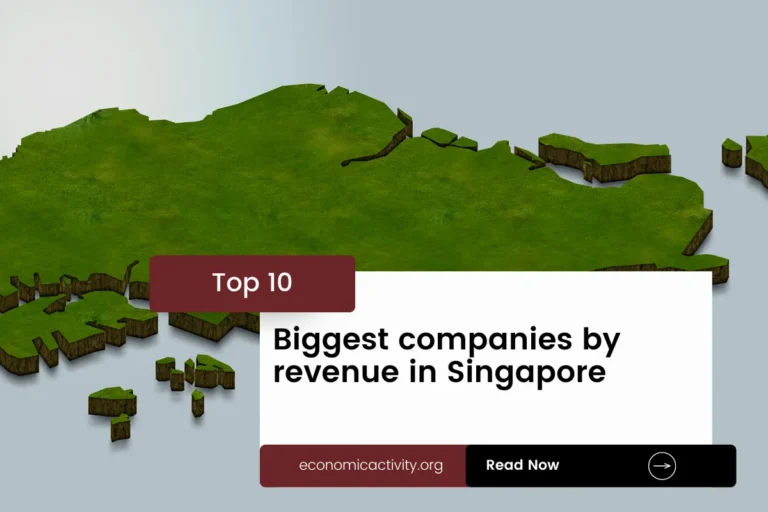Montenegro, with a population of 617,213, is ranked 160th in population size, just behind Suriname. Located in Southeastern Europe, it covers 13,810 square kilometers, ranking 148th in total area, just below Eswatini.
Montenegro’s economy in 2022 is positioned with a GDP of $6,229,801,580.79, ranking 151st globally. It falls behind the Cayman Islands, with a GDP of $6,844,827,379.31. The GDP per capita in Montenegro is $10,093.44, placing it at 77th worldwide.
It is surpassed by the Dominican Republic, with a GDP per capita of $10,111.25. Montenegro’s economic position reflects steady growth and potential for further development in the coming years.
What are the economic activities of Montenegro?
- Primary activities: 7.5% of GDP.
- Secondary activities: 15.9% of GDP.
- Tertiary activities: 76.6% of GDP.

Primary Sector of Montenegro
Montenegro’s primary sector, particularly agriculture, thrives due to its favorable climate and abundant natural resources. With 19% of the country’s land dedicated to agriculture, Montenegro produces a diverse range of products such as milk, potatoes, grapes, watermelons, sheep milk, cabbages, oranges, eggs, goat milk, and figs.
Despite contributing 7.5% to the GDP, agriculture plays a crucial role in the economy. The variety of crops and animal products highlights the sector’s significance, providing employment and sustaining local communities.
With a diverse geological landscape, Montenegro’s primary sector thrives on abundant natural resources. Bauxite mining boosts industrial growth, while hydroelectricity powers the economy, promoting sustainable development and energy independence.
Secondary Sector of Montenegro
What is the secondary sector or what are secondary activities?
The secondary sector involves industries that transform raw materials from primary activities into finished products for consumption. In Montenegro, the main industrial products are steelmaking, aluminum production, agricultural processing, and consumer goods manufacturing. These industries play a crucial role in the country’s economy by adding value to raw materials and creating products for both domestic and international markets.
In 2023, Montenegro’s manufactures accounted for only 26.31% of its total exports, indicating their relatively minor significance in the country’s export portfolio.
Tertiary sector of Montenegro
What is the tertiary sector or what are tertiary activities?
The tertiary sector in Montenegro encompasses a range of services where individuals provide knowledge and time to enhance productivity and meet needs. Key activities include restaurants, healthcare, education, banking, communication, media, tourism, transportation, and telecommunications. These services contribute significantly to the country’s economic growth and development by offering intangible goods such as expertise, information exchange, and protection.
Of particular importance, Montenegro’s economy heavily relies on tourism, contributing significantly to its GDP. With 2,510,000 annual arrivals and a tourist arrival ratio of 4.0667 per capita, popular destinations like the Bay of Kotor and Sveti Stefan attract visitors worldwide, boosting the country’s revenue and employment opportunities.
Another example of tertiary economic activity is the mobile cellular sector, with 1.3 million subscriptions, supporting technological growth. With 203 subscriptions per 100 inhabitants, it fosters connectivity and innovation.
Military Activities and Economic Sectors of Montenegro
The military is a clear example of many economic activities working together. In the primary sector, resources are extracted for military use. The secondary sector involves the manufacturing of weapons and equipment. The tertiary sector includes the services provided by the military, such as logistics and support. The quaternary sector focuses on military research and development, while the quinary sector deals with high-level decision-making and strategy.
In Montenegro, the military expenditure for 2023 is $114.5 million, which is 1.60% of the country’s GDP. The active military force consists of 2,350 personnel. This means there are about 20.3 active military members for every 1,000 people in the country.
International Trade of Montenegro
Import Activities of Montenegro

Montenegro’s high import activities, accounting for 74.37% of GDP, are crucial for meeting domestic demands and driving economic growth.
Montenegro’s key import activities include electricity, refined petroleum, aluminum, cars, and garments. Its top import partners are Serbia (24%), China (8%), Italy (8%), Croatia (7%), and Greece (7%).
Exports Activities of Montenegro

Montenegro’s export activities in 2023 totaled $722,520,232.81, representing 51.53% of its GDP. This high percentage underscores the critical importance of exports to Montenegro’s economy.
Montenegro’s export activities primarily involve copper ore, electricity, aluminum, aluminum ore, and packaged medicine. Its key export partners include South Korea (24%), Serbia (12%), Italy (9%), Switzerland (9%), and Bosnia and Herzegovina (7%).
Montenegro economy challenges in 2024
Montenegro, a small Balkan economy, faces challenges in 2024 despite strong growth from tourism and consumption. The Europe Now government pushes for EU accession, but risks loom from pension costs, debt service, and the informal sector. Affluent migrants from Russia and Ukraine add to the complexity of the situation.




Leave a Reply